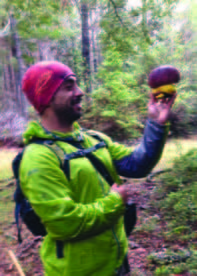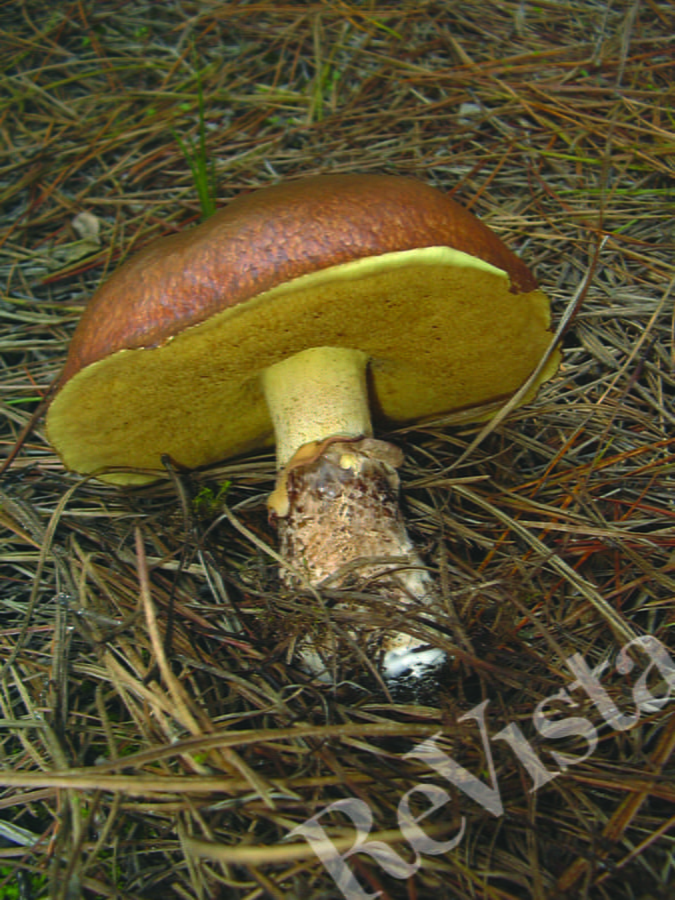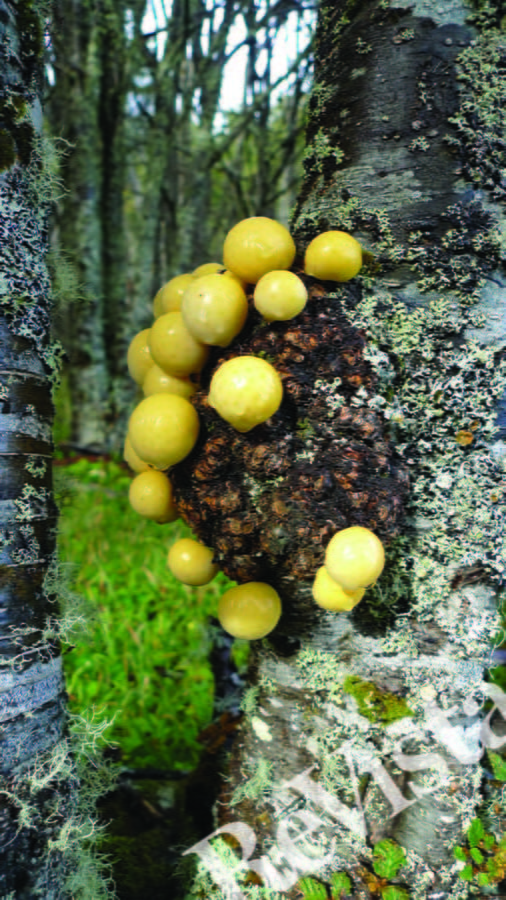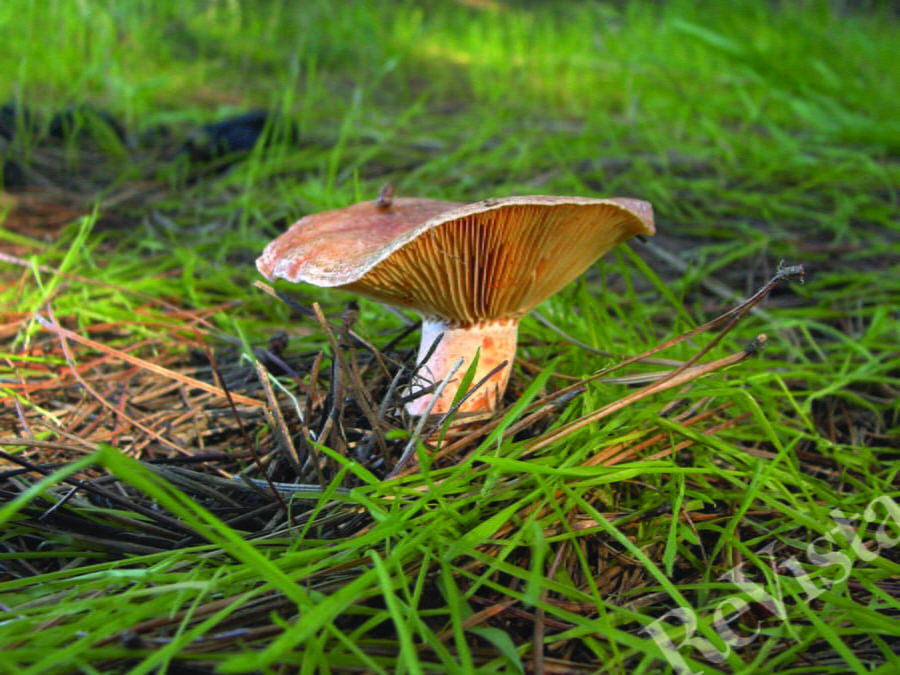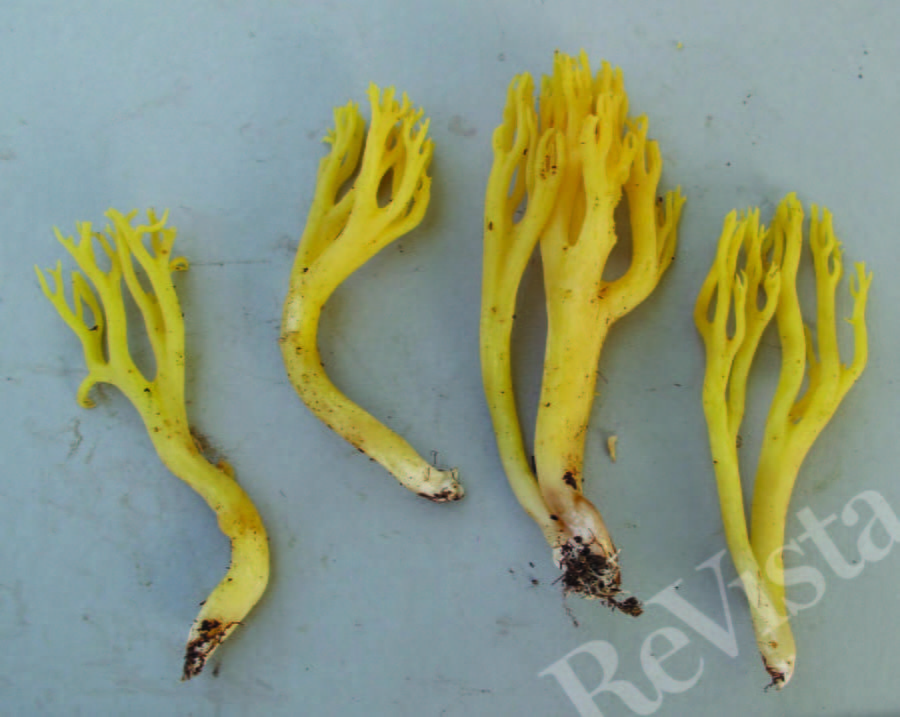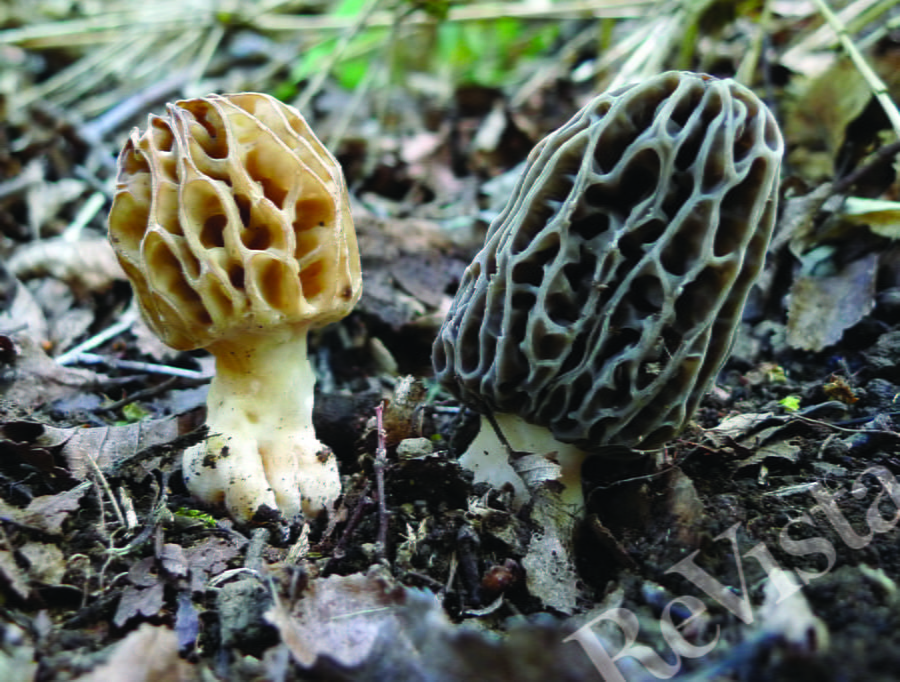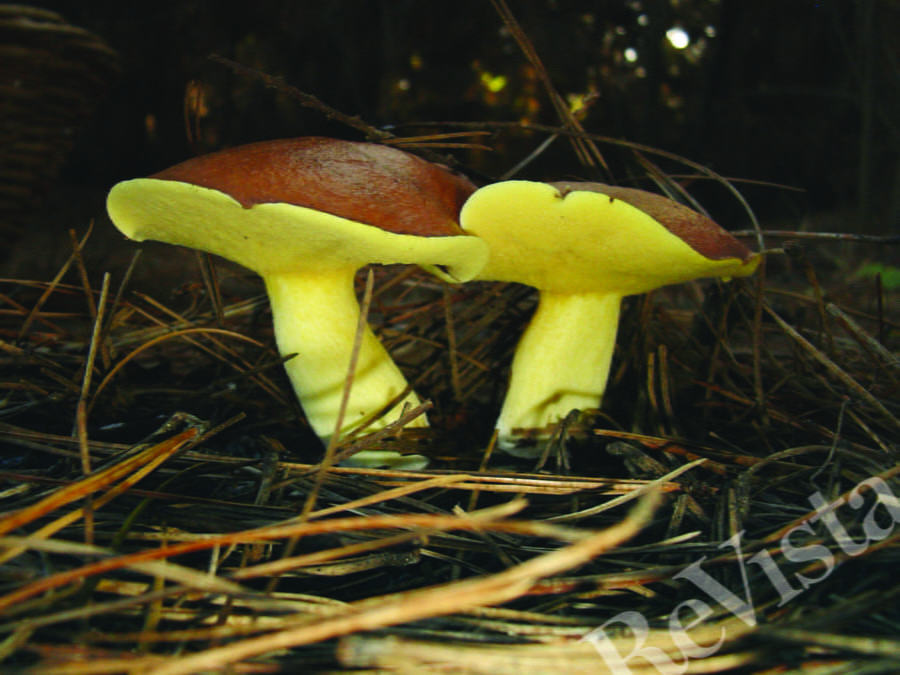Fungi and Forests
Shaping Landscapes, Cuisine and Commerce
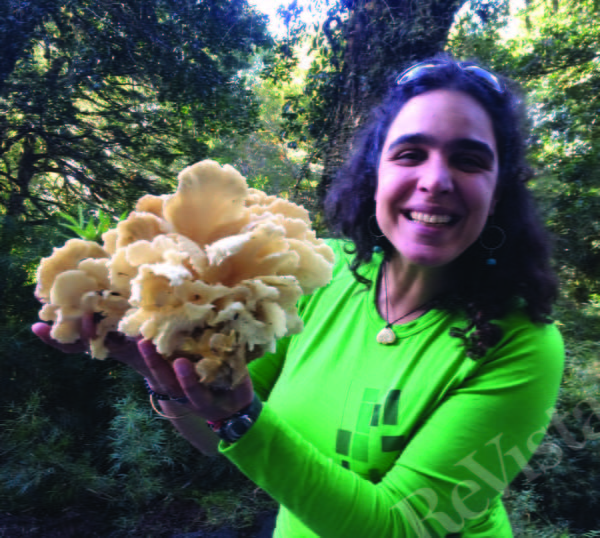
Giuliana Furci, Director of the Fundación Fungi, Santiago de Chile, with Grifola gargal. Photo by Matthew E. Smith.
Where we live, where we come from and the organisms that surround us shape our culture. What we eat or do not eat often hints at our deepest ancestral roots. The peoples of the world have been characterized as being either mycophilic, those who use and incorporate mushrooms and other fungi in their cuisine or mycophobic, those who avoid them. Southeast Asia, Italy, the Slavic countries, areas of the Amazon and Mexico are among the regions recognized to support cultures that are mycophilic but much of the English-speaking world is traditionally considered to be mycophobic. Some have argued that these biases are deeply rooted in religion and migration patterns. A recent study concluded that both tradition and external input in Europe, such as trade and cultural exchange, are strong factors shaping modern mushroom consumption behavior. Given the mix of indigenous populations, high historic and recent immigration and the development of exotic tree plantations in parts of South America, particularly in Chile and Argentina, the Southern Cone provides a rich context for reflection on concepts of native, foreign, wild, exotic and introduced as related not only to consumption of fungi but also to trees, forests and people.
An ancient use of mushrooms as food in Chile is documented through archeological study but one of the first reports by a European of fungi as food seems to be that of Carlo Giuseppe Bertero, an Italian who settled in Chile in 1827. He gave a common name to this edible fungus, dignénes, said to grow on a species of the southern beech, a tree in the genus Nothofagus. Trees of this genus form a large part of South America’s temperate forests. Bertero wrote that indigenous people ate the dignénes, but he himself found the fungus disagreeable. Charles Darwin encountered and collected a similar Nothofagus-inhabiting fungus in his travels to Tierra del Fuego on the Beagle in 1833. They were eaten by “the poor people,” he reported. He noted that the taste was sweet. The fungus Darwin collected was later named Cyttaria darwinii while Cyttaria berteroi was the name given to Bertero’s fungus. Ultimately these were joined in the genus Cyttaria by several other species all from southern South America, Australia and New Zealand. All the cyttarias occurred only on Nothofagus.
Darwin wrote, “In the beech forests the trees are much diseased; on the rough excrescences grow vast numbers of yellow balls…. When young they contain much fluid and are tasteless, but in their older and altered state they form a very essential article of food for the Fuegian. The boys collect them, and they are eaten uncooked with the fish.”
The cyttarias are known by several common names in the Americas, such as llaollao, pan del indio, digüeñe, dihueñe del ñirre, pinatra, caracucha, quideñe, lihueñe and dapa. Their quality as food has been analyzed and it is comparable to other mushrooms. The deeply embedded tradition of collecting these fungi has continued and they are found in markets and highend restaurants. Today the cyttarias are a sustainably harvested cash crop for rural populations. The fungus rarely seems to kill the trees even though infected branches and trunks become burled and distorted as noted by Darwin. These fungi have not been grown on artificial media or away from the living host plants. To continue the harvest, native Nothofagus forests must be sustained.
The species of Nothofagus have been, and still are, trees of importance for timber and fuel; the burls, produced on the infected trees, are carved for implements and souvenirs. These trees are mycorrhizal; that is, fungi associated with their roots promote tree growth. These mycorrhizal fungi belong to several taxonomic groups including those that produce mushrooms and truffles. Aside from the cyttarias, several fungi traditionally have been eaten in Chile and some of these are mycorrhizal—for example, Ramaria flava, R. subaurantiaca, and R. botrytis, all called changle or chandi; Boletus loyo, loyo; Gyromitra antarctica, chicharrón, which despite being considered poisonous is collected for export to Europe where it is eaten after cooking; and Grifola gargal, gargal, a wood-rotting fungus. In the Northern Hemisphere we eat Fistulina hepatica, another wood-rotting fungus; in the south they eat a cousin, Fistulina antarctica. All of these, whether wood rotting or mycorrhizal, are dependent on the integrity of the native Nothofagus forests.
- Suillus
- Unidentified
The idea that fungi perhaps were long part of culinary tradition is highlighted by the fact that loyo was the name under which Boletus loyo, described in 1912, was known by the local inhabitants and gargal, likewise, was the indigenous name for the Grifola mentioned above. It was formally described only in 1969. It is a sister to the Northern Hemisphere’s hen-of-the-woods, Grifola frondosa. The fact that these prize edible mushrooms received local names long before scientific names were proposed confirms the position in which these fungi were held in these areas.
Regions in the Southern Cone have experienced dramatic landscape/land-use changes. Nothofagus, Araucaria and Fitzroyia forests have been converted to agriculture purposes and native forests across the region have been cut and replanted with Northern Hemisphere pines and Eucalyptus species from Australia. The introduced trees employed in these plantations are also mycorrhizal. These non-native trees have carried with them their own, non-native, fungi, several of which are desirable edibles.
- Fistula Antartica
- Lactarius Delicious
- Unidentified
The plantations in Chile have particularly been developed around pines and notable among them is Pinus radiata, the Monterey Pine. It is restricted to relatively small populations in its native range in California. It is fast-growing, reasonably disease-free and yields high quality lumber and pulp for paper production. It is one of the most widely grown trees across the southern hemisphere both in the New and the Old World. The mycorrhizal fungi that have been introduced with this pine, and others, such as Lodgepole Pine, are important as exports in Chile and Argentina. For example, the slippery jack fungus, Suillus luteus (callampa negra, callampa de pino, callampa del pino oscura) fruits in profusion in pine plantations. One estimate of harvest is of up to three tons per hectare. It was described from Europe, is found in North America and is obviously highly dispersed. The slippery jack is economically important as a major export commodity. The dried mushrooms are sent to the mycophilic regions of Europe and North America. Suillus granulatus (callampa del pino clara) and Lactarius deliciosus (callampa rosada) both northern invaders, are also harvested for export. The pine plantations support a timber and pulp industry but they also support a booming mushroom export business.
It is paradoxical then that not only have the plantations directly displaced native forests but the pines also threaten to invade native forests and grasslands. The aggressive spread of introduced conifers is a major threat to ecosystems in temperate South America. Some of their success as invaders can be attributed to the advantages gained by forming fungal associates.
In scientific nomenclature there are often hints about the use or importance of the organism in its name. The name Lactarius deliciosus leaves little doubt about its edibility. Boletus edulis is the choice edible mushroom, known around the North Hemisphere under a variety of common names—porcini, steinpilz, herrenpilz, belyy grib and cèpe—and edulis certainly discloses the trait a mycophile would seek. I counted more than forty uses of edulis/ edule, esculenta/esculentus, and deliciosa/ deliciosus in species names of fungi from the northern hemisphere. Yet, only a single record of a South American species bearing one of these epithets exists. Carlos Spegazzini described a fungus as Peziza edulis (now known as Rickiella edulis), a fungus from Paraguay collected in 1880 by Benjamin Balansa. We know that Rickiella edulis occurs only in specific regions and forest types of Paraguay, Argentina and Brazil. There is no mention in the formal description of its edibility but obviously the name suggests it. The original specimen label notes “comestible.” It remains a mystery if it was eaten or who might have eaten it. Gerardo Robledo (Univerisidad Nacionional de Córdoba, Argentina) has collected this fungus and reports that in his experience, there is no indigenous fungal knowledge among the Guarani people of this region. They do not use fungi; indeed fungi are avoided. They are mycophobic.
- Unidentified
- Suillus
The morels, species belonging to the genus Morchella, are also forest-dwelling mushrooms although they do not form mycorrhizae. These are among the most desirable of the culinary fungi and they too are a major export commodity in Chile. The biology and distributions of the morels in this part of the world are not well understood. Several species are involved and their taxonomy has not yet been completely resolved. They fruit prolifically in the south where some species become abundant after Nothofagus forests have been intentionally burned. This destructive practice has a major negative impact on ecosystems, air and water quality, and, of course, on forest sustainability. On February 10, 2015, the governor of the province of Palena, Miguel Mardones, declared in the press that the fire that consumed 830 hectares of native forest was purposefully set to trigger an increase in morel yields. A major campaign has been mounted to discourage burning. In our lab we are trying to determine which species are being collected and to discover if, by understanding their life histories and geographic origins, we might further support the morel-gathering economy without promoting destructive burning practices.
There are dynamic interactions of many sorts in the intricate ecology of southern South American forests, influenced as they are by trees, people, and fungi from around the world. Trees introduced in plantations and their accompanying fungi have real economic value, but at the same time, many native forests and forest ecosystems are threatened. The introduction of non-native trees has changed how we see the countryside; landscapes have been altered in appearance and in composition. Familiar vistas have been modified. These new arrivals superimpose change on indigenous cultures as well. Some indigenous fungi in the native forests traditionally have been used as food and form an important part of the local economy. Economically, trees and forests, both indigenous and introduced, are valued. But, we know as well that the trees of the native forests support fungi, critical to tree and forest health, that are found nowhere else in the world. The interactions of trees, fungi and people touch upon nearly every facet of life in this wonderfully rich and diverse region.
He thanks Giuliana Furci, founder of the Fundación Fungi, for the use of several of the photographs in this article and for making possible much his work in Chile. He also thanks Matthew E. Smith, former post-doctoral fellow at Harvard and now Assistant Professor at the University of Florida, who was there at the beginning of the fieldwork and has continued the work through funding from the National Science Foundation (Grant DEB 1354802). DCLAS is thanked for support of several field trips that have allowed the exploration of this region.
Fall 2016, Volume XVI, Number 1
Donald H. Pfister is the Asa Gray Professor of Systematic Botany and Curator of the Farlow Reference Library and Herbarium. He is a member of the Department of Organismic and Evolutionary Biology.
Related Articles
Democratic Transitions: Conversations with World Leaders
The premise of this well-written and absorbing book is that political leaders matter decisively for democratic regime change. Sergio Bitar and Abe Lowenthal conducted face-to-face interviews…
Living with Landscapes: The Primacy of Nature
In many places in America, Asia and Europe, your doctor just might pen a “park prescription” urging green space use or send you to a “forest bathing” spa that touts nature’s health benefits…
Latin America in International Politics: Challenging US Hegemony
U.S. studies of the international relations of Latin American states and inter-American foreign policy have traditionally been viewed (stuck even) through the prism of U.S. hegemony, in…

